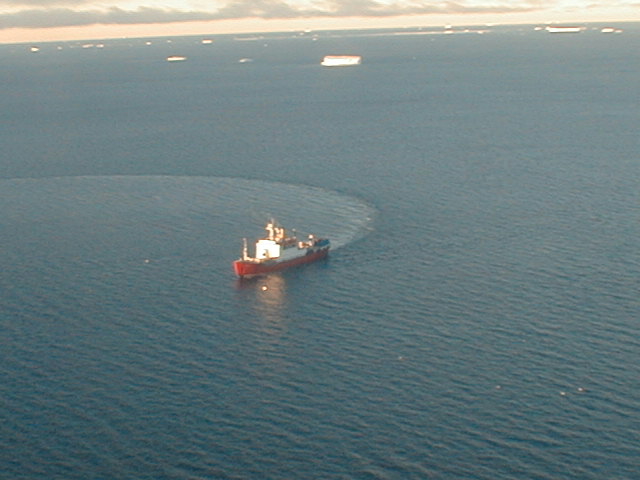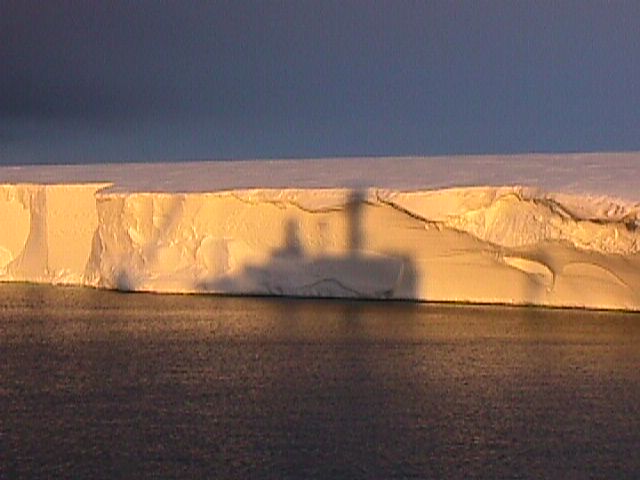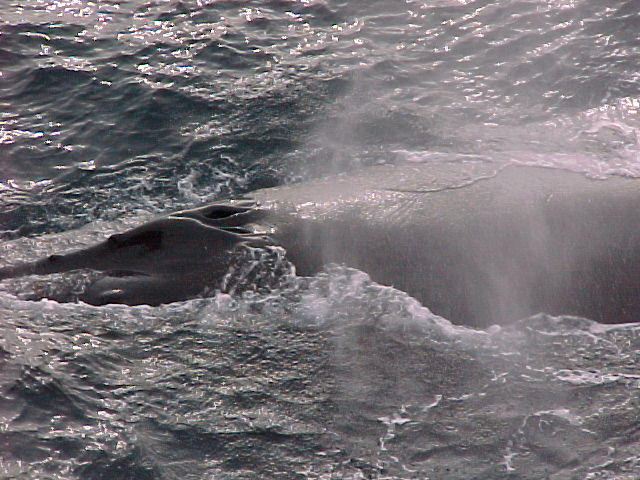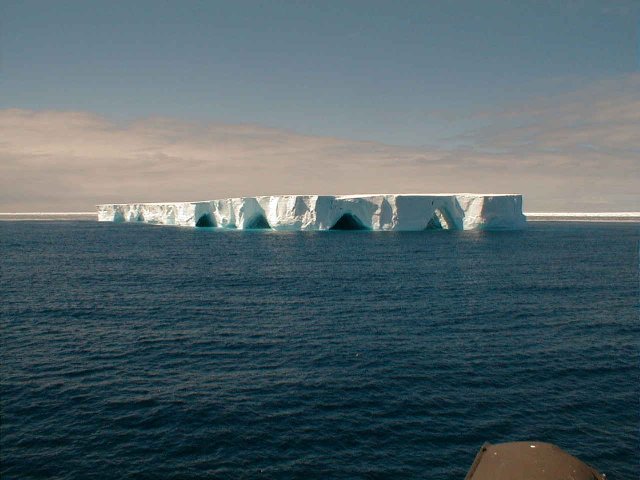| Date | Sunday 2nd May 1999 |
| Time | 1200 (UTC) |
| Position | Latitude 42°57' North
Longitude 010°34' West |
| Next destination | Grimsby (903.0 Nautical Miles) |
| ETA | 6th May 1999 @ 0800UTC |
| Total distance | 31033.8 Nautical Miles
(Since departing Grimsby on 17th October 1998) |
| Current weather | Overcast |
| Wind | Northerly, Force 3-4 |
| Sea state | Slight to moderate |
| Air temperature | 12.9°C |
| Sea temperature | 13.6°C |
Ship's
track - Updated every six hours from the weather observations sent
to Bracknell weather centre - direct from BAS
homepage.
Summary
At 1530 on Sunday 25th April the Bransfield passed close to the island of Fogo in the Cape Verde group. The weather, whilst sunny and warm, proved to be somewhat hazy and so the island could only be dimly seen. The Cape Verde Islands lie some 385 miles to the west of Africa and consist of ten islands and five islets which are divided into two groups, being the Barlavento (Windward) and Sotavento (Leeward) of which Fogo falls into the latter. When the islands were discovered in 1460 by Diogo Gomes they were uninhabited, with the first settlers arriving two years later in 1462. Towards the end of the fifteenth century and the beginning of the sixteenth century they were colonised by the Portuguese, by means of slaves brought across from Africa, and were administered from Portugal from 1587. Nowadays the population comprises Europeans, Africans and Mulattoes and the islands became the independent Republic of Cape Verde on 5th July 1975. The climate of the islands is healthy, except for the rainy period of August to October it seems there are complaints of dysentery and remittent fever. There is reported to be a good deal of tuberculosis, and malaria is also common. Leprosy is common on the Ilha de Santo Antâo. Some of the islands also suffer from droughts that can last as long as three to four years. The main industry on the islands is agriculture, with fruit such as bananas and oranges being grown. Other products grown include coffee, sisal, tobacco, cane sugar and sweet potatoes. Mineral resources include salt, limestone, kalin and pozzolana (a volcanic rock used in cement production). Fishing is also a major industry which has been developed over the years. Many of the explorers of the southern oceans stopped at the Cape Verde Islands to take on wood and water (often described as being brackish).
Monday, whilst still sunny and warm saw an increase in the wind and the sea state. By late afternoon the wind was at Force 6 but did ease later on. Tuesday morning saw an increase in the sea, with the waves peaking at about 4m. This has had an effect on our progress and saw our average speed over the twenty four hour period from noon on Monday to noon on Tuesday drop to 7.7 knots, with our total average speed since departing Montevideo being 11.3 knots. At mid-day the second engine was put on line to improve our speed. The vessel was now pitching easily into the 4 metre swell. The general weather remained mainly sunny with the temperature in the low 20's °C.
Wednesday and Thursday saw very little to report, the swell was still with us and the vessel continued to pitched.
Friday morning, at about 0600, we passed the island of Madeira. This time there was no haze or mist and so those of us that were up at this hour had the chance to have a good look at the island. There are four Island groups that make up the Arquipélago da Madeira, consisting of the Ilha de Porto Santo, Ilha da Madeira and Ilhas Desertas, about 520 miles to the south-west of Lisbon. Ilhas Selvagens are about 160 miles to the south-south east of Ihla Madeira. The total area of the islands is 813 square miles. The islands were discovered by the Portuguese in the fifteenth century, then uninhabited, and since then have been under the Portugese flag, with the exception of between 1581 to 1640 when they were dominated by the Spanish and also a temporary occupation of Ihla Madeira by British troops in the early part of the nineteenth century. The islands are of a volcanic origin, and Madeira is very mountainous with few craters. It is often described as the 'Garden of the Atlantic' and has a very pleasant climate, with the exception of spring on account of the north-east winds. Many of the early explorers stopped off at Madeira to stock up on fresh provisions and also to take on large quantities of wine! For anyone visiting the islands and wishing to explore on foot, but without the strain of climbing the mountains, the island is cris-crossed with Lavadas, being small man-made channels used to carry water from the hills to the city of Funchal.
Saturday proved to be uneventful during the day with a few whale sightings, but come the evening and the FIDS Bar was the place to be seen. An end of cruise party was held and went on until the early hours of the morning.
The Bransfield should start to enter the Bay of Biscay at about 1600
on Sunday afternoon. The weather forecast for the area is reasonable and
a comfortable passage is anticipated.
At a cost of only £10 it is well worth the price.
Forthcoming Events
Clocks to be advanced to BST during the early hours of Monday morning. Pick up the pilot at 0745 BST on Thursday 6th May and proceed to Grimsby Royal Dock. On arrival all the cargo will be discharged throughout the day. The Bransfield will then move to her lay-up berth within the Royal Dock for the summer refit period.
The next update will be written following arrival at Grimsby and should
be published on Monday 10th May 1999.




Last updated 03/05/1999 - webmaster@dartcom.co.uk